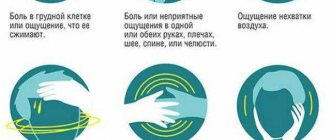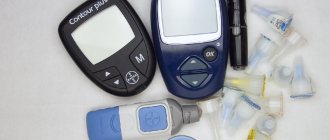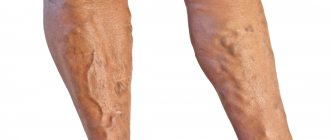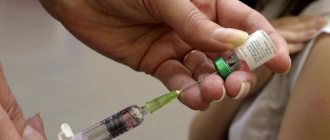Prostatitis is a common male urological disease that causes the development of an inflammatory process in the tissues of the prostate gland. This disease is diagnosed in every fifth man and often occurs in a latent form, which significantly complicates its treatment. All the first symptoms of prostatitis in men are quite vague, which creates certain difficulties in the early diagnosis of the disease. The first signs of prostate inflammation in men can appear at an early age, and the chronic course of the disease is observed in patients over 50 years of age. How does the disease manifest itself, what symptoms signal such a pathology, and what to do in this situation?
Reasons for the development of pathology
One of the main reasons for the development of the disease in representatives of the stronger sex is considered to be the penetration of pathogenic microorganisms and viruses into the prostate. The leading place among possible pathogens belongs to chlamydia, ureaplasma and trichomonas. With a decrease in protective functions, prostatitis can be triggered by conditionally pathogenic microorganisms that are normally found in the human body. Often the cause of the development of pathology is various viruses, for example, cytomegalovirus, papillomavirus and herpes. In some cases, injuries and injuries of various types in the perineum and pelvis can cause illness in men. Experts identify factors that, when exposed to the human body, can cause such a disease :
- severe hypothermia of the body;
- the presence of foci of chronic infections in the body;
- having promiscuous sex life;
- sedentary lifestyle;
- presence in the patient's medical history of sexually transmitted and urological pathologies;
- long-term sexual abstinence;
- inflammatory process in the rectum;
- atypical structural features of the prostate of a congenital nature.
According to the course of the disease in men, acute and chronic prostatitis are distinguished, each of which is accompanied by the appearance of certain symptoms. Only a specialist can establish the correct diagnosis and select effective treatment.
Causes and contributing factors
The main cause of inflammation of the prostate is the penetration of pathogenic and opportunistic microbes into it. 60% are E. coli. Recent studies confirm the role of gonococcal and trichomonas infections in inflammation. If the protective barrier of the gland is disrupted and local immune defense is reduced, the penetration of infections such as yeast-like, mycoplasma and ureaplasma, herpes virus and cytomegalovirus, microorganisms that cause respiratory diseases (with oral-genital contact), intestinal microflora (in cases of anal sex) is also possible. .
In cases of tuberculosis, dissemination of mycobacteria through the bloodstream into the prostate is possible. Isolated cases of tuberculous prostatitis occur, but are quite rare.
Ways of infection entering the gland:
- hematogenous - with blood from other foci of infection; this occurs through the venous vessels of the prostate, communicating with the veins of the penis, testicles, rectum, bladder and kidneys (including with tuberculous lesions)
- lymphogenous - through lymphatic vessels
- urethrogenic - through the urethra
Contributing factors:
- Hormonal imbalance, in particular, a decrease in testosterone levels, resulting in a decrease in the antimicrobial prostatic barrier.
- Varicocele (dilation of the veins of the spermatic cord), hemorrhoids, varicose veins of the lower extremities. These diseases are the result of a genetic defect in the venous valves, which leads to disturbances in blood microcirculation in organs located in the pelvis, an increase in local temperature, which is lower than normal (compared to the general body temperature), and the creation of favorable conditions for the life of microorganisms.
- Osteochondrosis, herniated discs of the lumbar spine and other innervation disorders, sedentary lifestyle. They can lead to prolonged spasm (constriction) of the prostate vessels or, conversely, to their prolonged expansion. The first leads to impaired blood supply, the second leads to stagnation of the blood.
- Intoxication - alcohol, leading to paralysis of small vessels, and nicotine, contributing to their prolonged spasm.
- Various infectious diseases, diabetes mellitus, frequent and prolonged negative mental effects, stressful conditions, sleep disorders - all this contributes to a decrease in overall immunity.
The first symptoms of the latent phase of prostatitis
Prostatitis, like any other disease, is accompanied by the appearance of characteristic symptoms from the very beginning of its development. In fact, diagnosing the initial stage of pathology is not so easy and it can drag on for a long time. What are the first signs of prostatitis that a man should pay attention to?
- periodic appearance of pain, localized in the pelvic region and testicles;
- Discomfort may occur in the anus and glans penis.
Often men do not pay attention to the first symptoms of prostatitis and associate their appearance with extreme fatigue at work or wearing uncomfortable underwear. This leads to the fact that prostatitis gradually moves from the latent phase to the active one.
When and who to contact
Any of the above symptoms are a reason to contact a urologist or andrologist (diagnosis of prostatitis in clinical and home conditions). Many men avoid going to the doctor because of negative attitudes towards digital rectal examination of the prostate or TRUS (transrectal ultrasound). If the patient categorically refuses these types of studies, the doctor will suggest a transabdominal ultrasound - when the sensor is placed against the lower abdomen. The bladder should be full (it is enough to drink 350 ml of liquid one hour before the procedure).
Rectal examination of the prostate
Based on the results of the ultrasound, the doctor determines the nature of the damage to the tissues of the prostate, surrounding tissues and the bladder. To identify the cause of inflammation, it is necessary to donate urine, blood, prostatic secretions (rectal massage of the gland will be required), and in some cases a spermogram.
Signs and symptoms of active prostatitis
If the pain syndrome becomes pronounced and worries a man more and more often, this indicates the transition of prostatitis to the active phase of development. What should a man do with such a pathology and what treatment should be carried out? In such a situation, you should definitely see a specialist, otherwise serious complications may develop.
One of the main signs of prostatitis in a man in the active phase is considered to be deterioration of deurination (urination), severe pain and discomfort during the act of urination. The reason for the development of such unpleasant sensations lies in the fact that the prostate noticeably increases in size and begins to put pressure on the urine output channel.
The result of this is a decrease in the urge to go to the toilet, increased pain and a burning sensation during the act of urination. Urine is released from the body of a man with prostatitis in small quantities and most often the urge to urinate intensifies at night. Frequent failures in sexual activity can also signal the development of an acute form of prostatitis. A man’s libido decreases, arousal does not always occur, and the pleasure obtained from ejaculation is blurred. The appearance of such a sign of prostatitis makes a man unsure of himself and can cause severe stress. However, erectile dysfunction may not occur due to the development of prostatitis, but on the contrary, irregular sex life causes an enlargement of the prostate gland. Taking into account this factor, experts say that an active sexual life is considered one of the ways to avoid the development of prostatitis.
Laboratory signs of the disease
It is possible to say that a man has developed prostatitis only after a laboratory test of blood and urine, as well as based on the results of ultrasound, CT, MRI and palpation. There are several known signs that indicate inflammation in an organ:
- the appearance of leukocytes in the blood and urine;
- detection of pathogenic microflora in urine and prostate secretions;
- an increase in the number of leukocytes against the background of a decrease in the number of lecithin grains in prostate juice;
- tenderness in the prostate area during rectal examination;
- an increase in the size of the gland on TRUS images, the presence of areas with increased echogenicity.
Also, the presence of inflammation in the body can be judged by other parameters - an increase in ESR in blood tests, a shift in the leukogram, the presence of immobile sperm in the ejaculate.
Various bacteria can be found in urine - Trichomonas, chlamydia, E. coli, etc.
Among the instrumental methods, in addition to TRUS, radiographic examination with contrast can be used. On pictures of the prostate in different projections, signs of inflammation will be clearly visible - areas with tissue structure disorders.
Symptoms of acute and chronic forms of the disease
Prostatitis in men can occur either in an acute form with the appearance of pronounced symptoms, or become chronic. Taking into account the nature of the development of the disease, certain symptoms of prostatitis appear, signaling an inflammatory process in the prostate gland. When acute prostatitis develops in representatives of the stronger sex, the following symptoms may appear:
- frequent urge to urinate, which does not bring relief to the man due to incomplete emptying of the organ;
- weak urine pressure and urine discharge drop by drop;
- the appearance of painful sensations in the perineum and pubic area, which gradually radiate to the sacrum and rectum;
- the occurrence of discomfort and pain during the act of urination and after its completion;
- premature ejaculation during sexual intercourse;
- discomfort and pain during bowel movements.
With prostatitis in acute form, symptoms of deterioration in the patient’s general well-being may appear: a rise in body temperature, headaches, general malaise and weakness. If prostatitis in men becomes chronic, then all the characteristic symptoms do not appear so clearly. Signs of prostatitis in men in the gland begin to bother him quite rarely, and most often this occurs during periods of exacerbation of the disease. With chronic prostatitis, the following symptoms may appear:
- constant fatigue and irritability;
- the presence of pathological discharge in the urine, for example, white flakes;
- periodic development of pain during the act of urination;
- the appearance of discomfort and pain in the perineal area;
- periodic rise in body temperature to 37 degrees;
- Temporary erectile dysfunction may occur due to the transition of the inflammatory process to nearby nerves and their endings.
In what cases does chronic inflammation of the prostate gland develop, what should a man do, and why is this form of the disease dangerous? Most often, the transition of acute prostatitis to a chronic form is observed in the absence of timely effective therapy, as well as in the event of incorrectly selected treatment. One of the dangerous complications of prostatitis is considered to be a prostate abscess with the formation of pus in the tissues of the gland, as well as sepsis.
Normal prostate size
The prostate gland in men increases throughout life, and it has two periods of active growth - during puberty (11-22 years) and after reaching 40-50 years of age. And it is the size of the prostate gland that allows the doctor to determine the presence of an inflammatory process in this organ.
In healthy men under 50 years of age, prostate sizes are within the following limits:
- 26-45 mm – transverse size (distance between the edges of the upper and lower lobes);
- 16-22 mm – anteroposterior size (the distance between the anterior and posterior surfaces of the lobes);
- 22-40 mm – width of the gland;
- 220-260 mm cube is the volume of the gland.
In mature men, the prostate enlarges for physiological reasons, so the size of the gland may exceed the above norms.
And according to urologists, for representatives of the stronger sex over 50 years of age, prostate sizes are considered normal in which the volume of the gland does not exceed 30 cubic centimeters.
Men cannot independently determine the size of the prostate. Only a doctor can set these parameters using the research results. Therefore, when the first symptoms of enlargement of this organ appear, you should consult a doctor.
Symptoms of the disease, taking into account the type of disease
In fact, prostatitis is often diagnosed in men whose symptoms are very vague. Problems with the prostate of viral origin and their symptoms have some differences from diseases of bacteriological origin, and herpetic prostatitis is prone to frequent recurrence. Medical practice shows that viral prostatitis in most cases can be diagnosed only through laboratory testing of sperm. Signs of prostatitis in men may be similar to urogenital pathologies of bacterial origin, and sometimes may be completely absent. A common form of the disease in men is considered chronic non-bacterial prostatitis, which often becomes a sign of extragenital pathologies. With prostatitis of this form, the following symptoms appear:
- development of pain in the pelvic area, which can persist for several months;
- absence of signs of inflammatory process;
- periodic occurrence of pain in the penis, urethra and bladder.
Chronic asymptomatic prostatitis is in no way associated with a bacterial infection and is not accompanied by the appearance of pronounced symptoms. It is possible to diagnose an asymptomatic inflammatory process in the prostate gland only by a high level of leukocytes and bacteria in the urine, as well as if a biopsy is performed. Often, congestive prostatitis is detected in men, and the main reason for its development is considered to be stagnation of prostate secretions and venous blood in the pelvic area. With this type of disease, the following signs and symptoms of prostatitis usually appear:
- libido decreases noticeably;
- in the morning there is frequent urination;
- aching pain appears in the perineal area;
- there are minor difficulties during the act of urination;
- erection weakens;
- there is lethargy of orgiastic sensations.
Treatment methods
The treatment regimen is prescribed by the doctor individually, based on all previous tests.
Knowing what the first signs of male prostatitis are, a person can promptly identify them and consult a doctor.
Treatment of acute or chronic prostatitis begins after diagnostic measures. The fight against the disease in most cases is carried out on an outpatient basis.
Manifestations of prostatitis at 1 and other stages of development are treated according to one of the two basic principles of complex therapy:
- antibacterial course, which provides for the rehabilitation of inflammatory foci;
- a health course aimed at normalizing blood flow and strengthening it in the prostate gland.
Drug therapy for prostatitis is usually based on antibiotics. They help defeat pathogenic microflora and prevent the development of secondary infection. Additionally, the doctor prescribes anti-inflammatory drugs and painkillers.
For each man who has been diagnosed with chronic or acute prostatitis, an individual course of therapy is selected. When choosing drugs and physiotherapeutic procedures, the urologist must take into account the patient’s current condition, his complaints, the severity of symptoms and the stage of development of the pathology.
Multivitamin complexes can be used as an auxiliary therapy. Their action is aimed at strengthening the protective functions of the body, which has been weakened due to the fight against the inflammatory process.
A man who has contracted prostatitis, after recovery, should take care to prevent recurrence of inflammation. Attentive attitude to one’s own health helps to consolidate the results that were achieved during drug and physiotherapeutic treatment. This also affects the achievement of stable remission, which a person with chronic prostatitis needs.
Prostatitis can affect potency or cause infertility. The success of treatment largely depends on how quickly treatment was started, so the man must independently pay attention to the first signs. Let's look at how prostatitis manifests itself in acute and chronic forms, and also provide information about clinical manifestations and symptoms.
Possible complications and prevention
If a man does not pay attention to all the symptoms that arise and there is no effective treatment, then the consequences of the disease can be sad. Prostatitis is considered a rather complex and dangerous pathology, which often causes the development of many complications. One of the frequent consequences of acute prostatitis is its transition to a chronic form.
Modern medicine offers various treatment methods that allow you to get rid of unpleasant symptoms and diseases for a long time. If pain and discomfort appear in the pelvic and genital areas, you should consult a specialist who will conduct a thorough examination of the patient, make an accurate diagnosis and tell you all the ways to treat the disease.
With late diagnosis of the pathological process, the following complications may develop after prostate disease:
- inflammatory process in the seminal vesicles;
- development of cystitis and pyelonephritis;
- the appearance of stones in the bladder;
- an abscess that requires opening and draining;
- prostate diseases cause male infertility;
- impotence;
- acute urinary retention.
Secondary signs of inflammation
If treatment for prostatitis is not started when the first signs appear, the disease will continue to develop. Due to inflammation, the size of the prostate gland will gradually increase, causing the urinary canal to be significantly compressed.
The normal flow of urine will be disrupted and serious problems with urination will occur, which will be accompanied by the following symptoms:
- severe cutting pain during urination;
- disturbances in the urination process (weak stream, severe pain at the beginning of the process);
- inability to completely empty the bladder;
- erectile dysfunction and even impotence;
- urine mixed with blood or pus.
It is important to understand that these secondary signs of prostatitis are not only unpleasant and painful in themselves, but are also evidence that urine is not removed from the urinary system in a timely manner and begins to poison the body. Therefore, the patient’s general well-being worsens, and against the background of advanced prostatitis, an exacerbation of other chronic diseases is likely.
Some men mistake the symptoms of prostatitis for signs of prostate adenoma and do not start treatment on time. However, prostatitis, unlike adenoma, is a very dangerous disease, so if you experience difficulties with urination, you must consult a doctor to make a diagnosis and begin appropriate treatment.
Prevention of prostatitis
What should a man do to prevent inflammation and the manifestation of prostatitis? In order to avoid the unpleasant consequences of prostatitis and prevent the development of the disease itself, it is necessary to protect the body from provoking factors. Men must follow the following rules:
- lead an active lifestyle, because a sedentary lifestyle is considered one of the reasons for the development of the disease;
- have regular sex life and it is best to have one partner;
- avoid severe hypothermia and stressful situations;
- When diagnosing chronic sources of infection, it is necessary to carry out timely sanitation.
At the first symptoms of prostatitis in men, it is necessary to seek advice from a specialist, which allows you to identify the disease at an early stage of its development. For preventive purposes, it is recommended to be examined by a urologist twice a year, even if the man is not worried about anything. You should not self-medicate, as this can further aggravate the course of the disease and cause various complications.
Traditional medicine for the treatment of prostatitis
Alternative medicine offers more than a hundred recipes designed to fight prostatitis, alleviating the symptoms of the disease and being additional means to the main treatment. It is worth remembering that not all of the proposed options may be suitable for a person with a certain form of the disease; some can cause an allergic reaction and other complications.
We offer several tried-and-tested, popular and effective recipes:
- Pumpkin seeds. They contain a large amount of zinc, which is necessary for the male body. A man should eat 30-35 raw seeds per day for preventive and therapeutic purposes. You can prepare special balls from seeds crushed in a blender (without peel) mixed with honey (200 ml). Form the resulting mass into balls the size of walnuts and place in the refrigerator. Eat 1 ball twice a day half an hour before meals, chewing slowly, sucking out the healing juices from it. A powerful and effective remedy, it can be used once a year.
- Juices from vegetables and fruits. Help the body secrete more uric acid. Natural freshly squeezed juices from cucumbers, carrots, and asparagus are especially successful in this. They can be drunk in a mixture, varying the proportions of each to suit your taste. You need to consume more than half a liter of liquids per day in several doses.
- Natural honey. And also beekeeping products have proven themselves in the treatment of prostatitis. Herbal medicine based on them has a powerful anti-inflammatory and analgesic effect. For example:
- Propolis suppositories. 40 g of propolis are evaporated in a glass of alcohol, then this extract (0.1 g) is mixed with two grams of rye flour and cocoa. Suppositories are formed and inserted into the rectum before bedtime for a month.
- Propolis tincture. A 20% tincture (40 drops) is diluted with water (100 ml) and taken 20 minutes before meals.
- Herbal infusion with honey. Used for acute prostatitis. Calendula flowers (30 g), horsetail herb (25 g), elecampane root (15 g), leaves of stinging nettle, sage, mint (10 g of each plant) are crushed and mixed. Then take three tablespoons from the resulting mixture and pour half a liter of boiling water over them. Leave in a thermos for three hours, strain, add honey to taste, drink a third of a glass three times a day, half an hour before meals.
- Red root decoction. The crushed root (25 g) is poured into a liter of boiling water, left for an hour in a thermos, drunk three times a day before meals, a third of a glass. You can add milk and honey. This tea is recognized as the best remedy for prostatitis.
- Pharmaceutical chamomile. 10 g are poured into 100 ml of very hot water, infused for half an hour, filtered. Used as a solution for microenemas (70-80 ml).
- Wild pear. Patients observe the effect a few days after starting to take pear compote/tea. With long-term use, prostatitis is almost completely cured. The fruits and leaves are used not only fresh, but also dried to prepare medicine in winter. This drink is an excellent preventive measure.
The list of folk recipes can be continued endlessly, but only a doctor will recommend in each specific case one or more important ones in an integrated approach to treatment.












